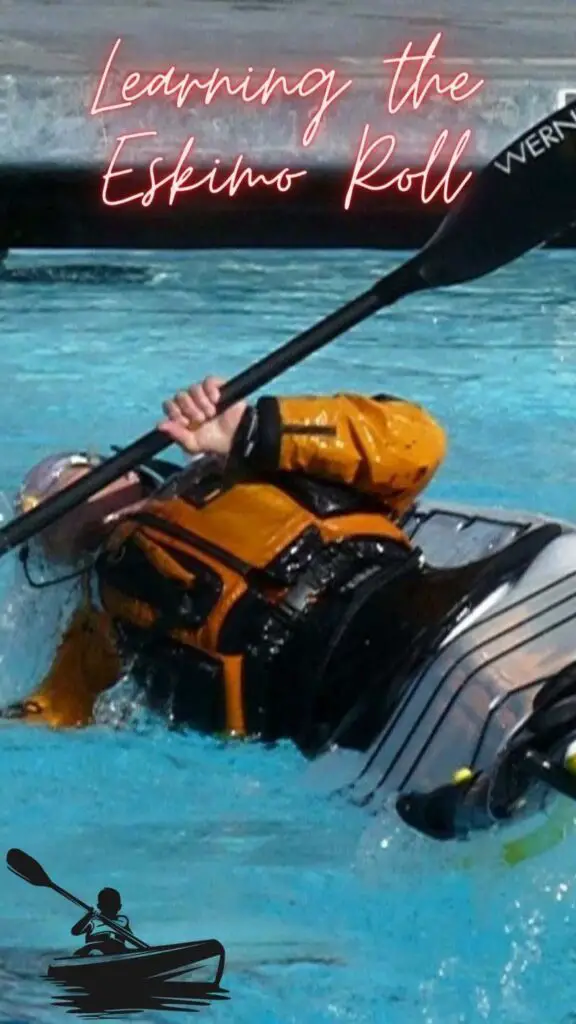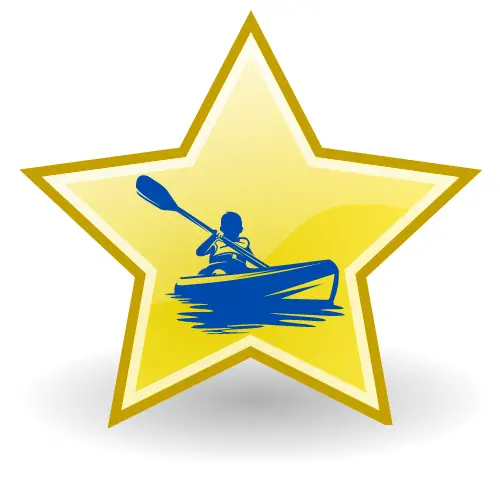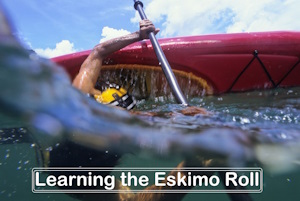Are you an adventurous soul who loves exploring water sports? If so, then learning the Eskimo Roll is a skill worth acquiring. The Eskimo Roll, also known as the kayak roll or the kayak righting technique, is a fundamental maneuver used by kayakers to recover from a capsized position. In this comprehensive guide, we will take you through the step-by-step process of learning the Eskimo Roll, enabling you to master this impressive technique. So grab your kayak and let’s dive in!

Table of Contents
Introduction to the Eskimo Roll
The Eskimo Roll is a kayaking maneuver that allows you to right yourself after capsizing, without the need to exit the kayak. It is a technique primarily used in whitewater kayaking, where fast-moving currents and obstacles make it crucial to regain control swiftly. Mastering this skill not only enhances your safety but also boosts your confidence on the water.
Equipment Needed
Before delving into the process of learning the Eskimo Roll, it’s essential to gather the necessary equipment. Here’s a list of items you’ll need:
- Kayak: Choose a kayak specifically designed for whitewater kayaking, as it offers better stability and maneuverability.
- Paddle: Opt for a paddle suitable for your height and paddling style. Ensure it is in good condition and of the appropriate length.
- Personal Flotation Device (PFD): A PFD is a must for any kayaking activity. Make sure it fits well and is comfortable to wear.
- Helmet: Protect your head by wearing a helmet designed for whitewater kayaking. It should fit securely without obstructing your vision.
- Spray Skirt: A spray skirt covers the cockpit opening, preventing water from entering the kayak during rolls and maneuvers.
Finding the Right Location
To begin learning the Eskimo Roll, choose a suitable location. Look for a calm body of water, such as a pool or a lake with minimal waves or currents. The absence of external factors allows you to focus solely on mastering the technique without unnecessary challenges.
Body Positioning and Technique
Proper body positioning and technique are essential for executing a successful Eskimo Roll. Follow these steps:
- Sit in the kayak with your knees bent and your feet resting against the footrests.
- Place your hands on the paddle, ensuring they are shoulder-width apart.
- Lean forward slightly, engaging your core muscles to maintain balance.
- Tuck your body forward and rotate your torso toward the side you plan to roll.
- Keep your head down, close to the kayak, and protect it with your arms.
Mastering the Hip Snap
The hip snap is a critical component of the Eskimo Roll. It involves using your hips to generate the necessary force for rolling the kayak upright. Here’s how to master the hip snap:
- Begin in the capsized position, with your body and head underwater.
- Initiate the hip snap by forcefully rotating your hips and torso in the opposite direction of the roll.
- Use your lower body’s power to bring the kayak back to an upright position.
- Practice the hip snap repeatedly to develop the required strength and coordination.
Initiating the Roll
With the proper body position and a mastered hip snap, it’s time to initiate the roll. Follow these steps:
- Tilt your head back slightly, looking towards the surface of the water.
- Maintain a steady grip on the paddle, ensuring it stays in contact with the water throughout the roll.
- Engage your core muscles and execute a powerful hip snap to initiate the roll.
- Simultaneously, sweep the paddle through the water, generating additional momentum.
- As the kayak rolls upright, use your body and paddle to stabilize yourself.
Maintaining Balance
Maintaining balance after executing the Eskimo Roll is crucial to prevent re-capsizing. Here are some tips:
- Keep your upper body centered and aligned with the kayak.
- Utilize your paddle as a stabilizing tool, using it to brace against the water.
- Focus on maintaining a strong core and proper posture throughout the recovery process.
- Practice maintaining balance in calm water before progressing to more challenging conditions.
Practicing in Different Conditions
Once you’ve become comfortable with the Eskimo Roll in calm water, it’s time to test your skills in various conditions. Gradually introduce yourself to mild currents, small waves, or moving water. This progressive approach allows you to adapt to changing circumstances and build confidence.
Common Mistakes to Avoid
Learning any new skill involves overcoming challenges and avoiding common pitfalls. Here are a few mistakes to watch out for during your Eskimo Roll practice:
- Failing to maintain proper body positioning and technique.
- Rushing the roll without executing a powerful hip snap.
- Not keeping your head close to the kayak, risking potential injuries.
- Neglecting to practice balance and stability after completing the roll.
- Skipping progressive training and attempting advanced techniques prematurely.
Tips for Successful Learning
To make your journey of learning the Eskimo Roll smoother and more enjoyable, consider these tips:
- Practice regularly: Dedicate consistent time to practice the Eskimo Roll to reinforce muscle memory and build confidence.
- Seek professional guidance: Enroll in kayaking classes or find an experienced instructor who can provide valuable guidance and feedback.
- Stay persistent: Learning the Eskimo Roll can be challenging, but persistence is key. Embrace the learning process and celebrate small victories along the way.
Safety Measures
Safety should always be a top priority when engaging in any water activity. Here are some safety measures to follow while learning the Eskimo Roll:
- Always wear a personal flotation device (PFD) and a helmet.
- Inform someone about your kayaking plans and expected return time.
- Avoid kayaking alone, especially when practicing advanced techniques.
- Familiarize yourself with local water regulations and guidelines.
- Be mindful of your physical limitations and avoid pushing yourself beyond your capabilities.
Building Confidence
Building confidence in your Eskimo Roll requires patience and practice. Here’s how you can boost your confidence:
- Set achievable goals: Break down the learning process into smaller milestones and celebrate each achievement.
- Visualize success: Imagine yourself executing a flawless Eskimo Roll, reinforcing positive imagery in your mind.
- Reflect on progress: Keep a journal to track your progress and reflect on your improvements over time.
Taking It to the Next Level
Once you have mastered the basic Eskimo Roll, you can explore advanced techniques and maneuvers. Some options to consider include:
- Extended paddle roll: Performing the roll with an extended paddle for added difficulty.
- Hand roll: Executing the roll without the use of a paddle, relying solely on body movements.
- Rolling in challenging conditions: Practicing the Eskimo Roll in more demanding environments, such as whitewater rapids.
Benefits of Learning the Eskimo Roll
Learning the Eskimo Roll offers several benefits beyond just recovering from a capsized position. Here are a few advantages:
- Increased safety: The ability to roll upright without exiting the kayak enhances your safety in unpredictable water conditions.
- Enhanced confidence: Mastering the Eskimo Roll boosts your confidence and allows you to explore more challenging kayaking adventures.
- Improved technique: Practicing the Eskimo Roll improves your overall kayaking technique, including balance, posture, and paddle control.
- Connection with nature: Kayaking provides an opportunity to connect with nature and enjoy the serenity of water environments.
Conclusion
Congratulations on embarking on the journey to learn the Eskimo Roll! By following the step-by-step guide outlined in this article, you are well on your way to mastering this impressive technique. Remember to practice regularly, seek guidance when needed, and prioritize safety at all times. The Eskimo Roll opens up a world of possibilities for kayaking adventures, ensuring you can confidently navigate through the water and embrace the thrill of the sport.
FAQs
How long does it take to learn the Eskimo Roll?
The learning time varies for each individual, but with consistent practice, most people can master the Eskimo Roll within a few weeks or months.
Can I learn the Eskimo Roll without any prior kayaking experience?
It’s recommended to have some basic kayaking experience before attempting to learn the Eskimo Roll. Familiarity with kayaking techniques and water safety is beneficial.
Is the Eskimo Roll difficult to learn?
The Eskimo Roll can be challenging at first, but with patience, practice, and proper guidance, it becomes attainable for most kayakers.
Can I perform the Eskimo Roll in sea kayaking?
Yes, the Eskimo Roll technique can be applied in sea kayaking as well. However, it’s important to adapt to the specific conditions and challenges of sea kayaking.
Are there any age restrictions for learning the Eskimo Roll?
While there are no strict age restrictions, it’s important to assess your physical capabilities and consult with a professional if you have any concerns.
Our best posts:
- Lifetime Kayak Reviews;
- Ideas and Suggestions for Funny Kayak Names;
- Best Ultralight Spinning Reel;
- Best Kayak Cart For Sand;
- Best Fish Finder For Kayak;
- Best Monofilament Fishing Line For Spinning Reels;
- Vibe Shearwater 125 Review;
- Best Kayaks for Dogs;
- Best Inflatable Kayak For Whitewater;
- Kayak Trolling Motors.

